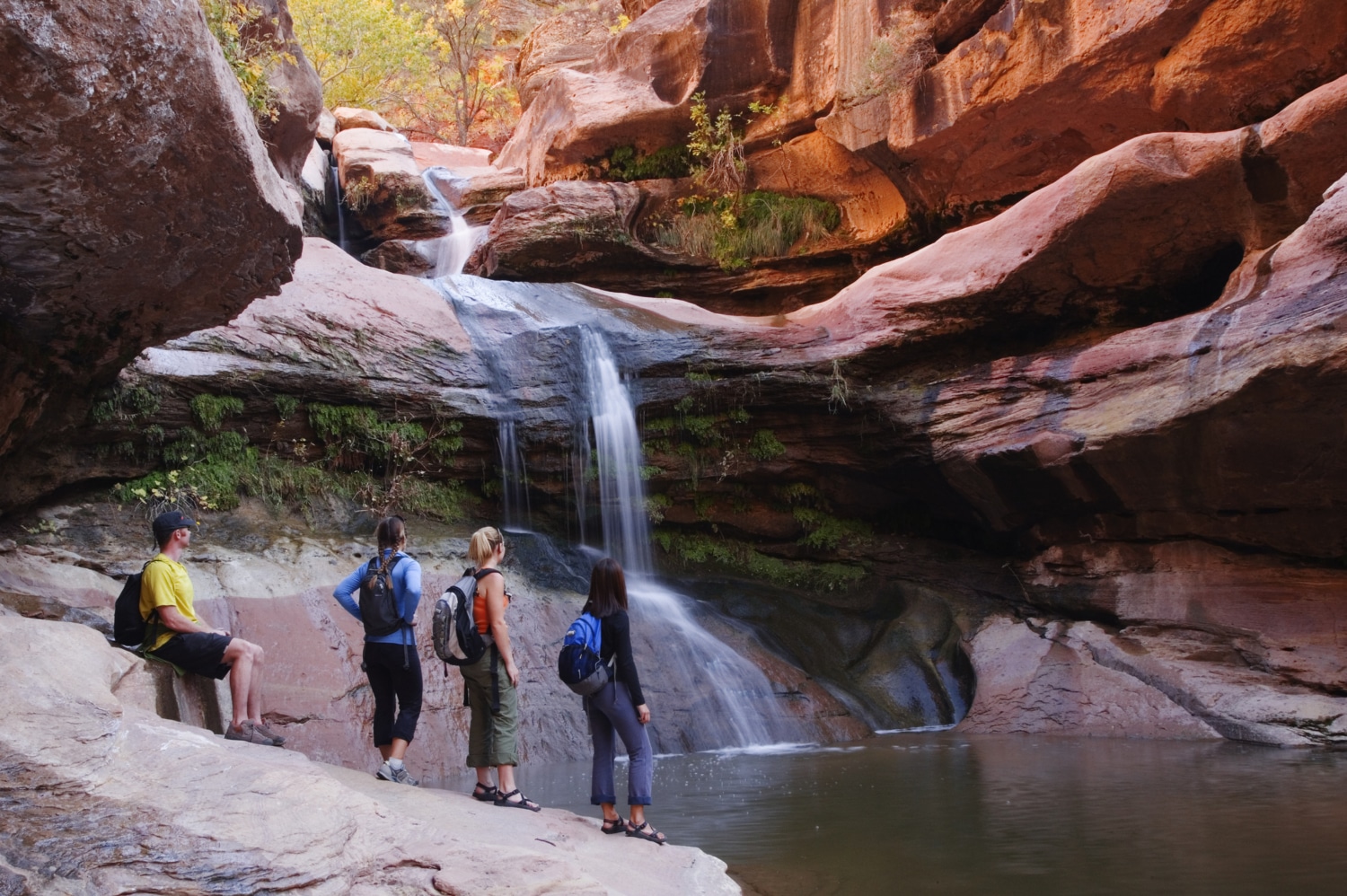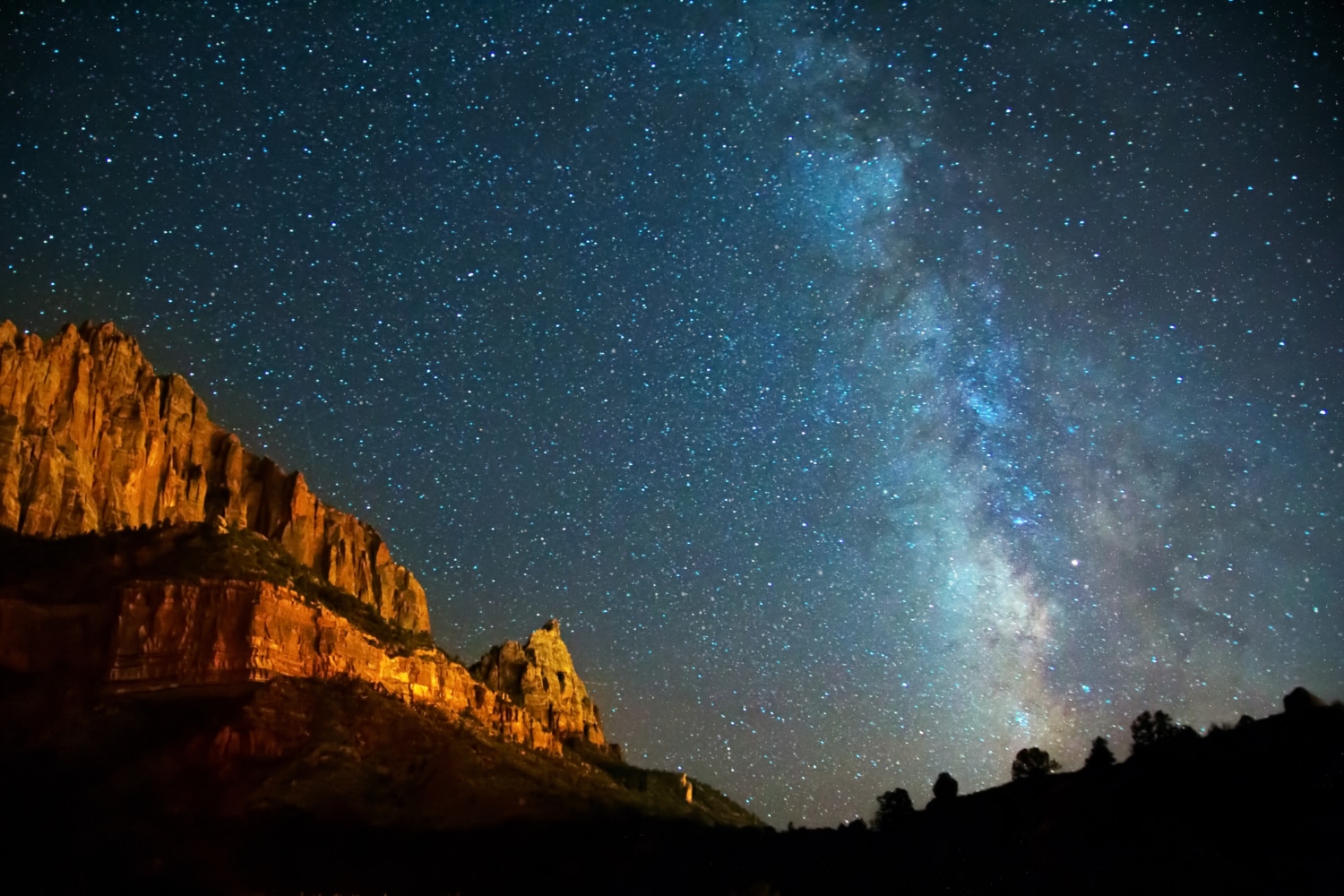Why Go
Red rocks, slot canyons and wading in the Virgin River all make Utah’s Zion National Park one of the most popular in the United States. Sometimes described as a “red rock Yosemite Valley,” Zion National Park has plenty of cascading waterfalls and hanging gardens that cling to the walls. It’s also Utah’s oldest, most celebrated and busiest national park.
Located in southwest Utah, Zion is part of a scenic area of red rock canyons that make up the state’s Mighty 5 National Parks. Near St. George, Utah (54 miles), Zion is also only 70 miles from Bryce Canyon, making it easy to combine a family trip to both Zion and Bryce Canyon National Park.

What to Do
The 229-square-mile park is famous for its 15-mile-long canyon cut by the Virgin River and packed with scenic wonders such as the red rock cliffs, waterfalls, and hanging gardens. However, Zion can also get very crowded with anywhere from 3-4 million visitors each year and the desert canyon can get extremely hot. Keep these factors in mind when planning a trip to Zion. For a less crowded experience, head 40 miles north to Kolob Canyons, another section of Zion National Park with its own separate entrance and visitor center.
- Hiking. The main activity and draw to Zion is hiking in its stunning wilderness. There are a number of trails and hikes to choose ranging from easy to strenuous. If you’re just in Zion for a quick visit, make sure to get off the shuttle bus and walk along the Virgin River. One easy hike for younger kids is the Riverside Walk, which is just 2.2 miles from the Temple of Sinawava to The Narrows and back. Take the shuttle bus all the way to the end of the Zion Canyon and exit at the Temple of Sinawava. All along the path there are places to wade into the Virgin River and cool off if it’s hot. Parts of the Riverside Walk trail are paved and accessible to wheelchairs. Once you reach The Narrows, you can choose whether to continue on into the slot canyon via wading in the river. A popular, but strenuous hike good for older kids and teens is Angel’s Landing. This hike is over five miles, gains nearly 1,500 ft in elevation and has long portions where you are exposed to steep and long drop-offs. The final portion of the trail has chains affixed to the cliffs to assist climbers and is definitely not for those with vertigo or a fear of heights. However, once you reach the top, the views of Zion are unmatched.
- Camping. Zion National Park has three campgrounds: South, Watchman and Lava Point Campgrounds. South and Watchman Campgrounds are within Zion Canyon and Lava Point Campground is north of the canyon approximately an hour drive away. Accommodations are also available at the historic Zion National Park Lodge, established in 1924, right in the middle of the main canyon. Campsites and hotel rooms go very fast at Zion National Park and can be booked up to a year ahead of time so be sure to plan your trip far enough in advance.
- Ranger and Jr. Ranger Programs. There are a number of daily ranger-led programs to further explain Zion to visitors including walks, talks and nature demonstrations. Rangers also ride along on the Zion Canyon shuttle buses and lead guided tours of the area that last for 90-120 minutes. Evening programs are held in the campgrounds where rangers share some of their favorite stories. Jr. Rangers can earn a badge by completing the Zion National Park Junior Ranger Handbook and attending one of the Ranger-led programs.
- Horseback Riding. During peak season vendors offer guided horseback rides through Zion Canyon itself. You can also find horseback rides offered via stables located just outside the park – these rides take place all year on both public and private land.
- Wildlife. Zion is home to a wide variety of wildlife including bighorn sheep, mule deer, ringtail cats and the ubiquitous rock squirrels. You can also find nearly 300 species of birds such as peregrine falcons, California condors, and Mexican spotted owls as well as a variety of reptiles, amphibians, and fish.
- Zion – Mt. Carmel Scenic Highway. A 12-mile scenic highway connects the south and east entrances to Zion National Park. One highlight of the drive is the mile-long tunnel through the rock cliffs. Truly an engineering marvel, it even has windows or galleries providing views of the outside beauty. Truly a spectacular drive that should not be missed.
- Kolob Canyons. This section of Zion National Park lies 40 miles north of the south entrance and 15 miles below Cedar City. Much less crowded than Zion Canyon, Kolob Canyons is made up of red rock box canyons and offers a five-mile scenic drive as well as plenty of hiking opportunities of its own.

Getting Around
The closest major airports to Zion National Park are in Las Vegas, NV (161 miles) or Salt Lake City, UT (308 miles). Therefore, you are going to need a car to get to the park from these airports. Once you arrive at Zion National Park, cars are not allowed in Zion Canyon itself. Park your car and take the shuttle into the canyon. Depending on the season, you may need to park your car outside of the park entrance and take a complimentary shuttle bus to the Zion National Park entrance itself. Of course your car is permitted on the Zion – Mt. Carmel Scenic Highway, but larger RVs and buses will need to pay a $15 fee to go through the tunnel. There are no vehicle limits on the scenic drive in Kolob Canyons.
Dave Parfitt is a reformed academic with a PhD in neuroscience, who began writing about his family travel adventures after surviving a trip to Walt Disney World with his two budding princesses, now ages 19 and 16. As owner and editor of Adventures By Daddy, Dave offers family travel advice and escapist fun from Dad’s point of view.

